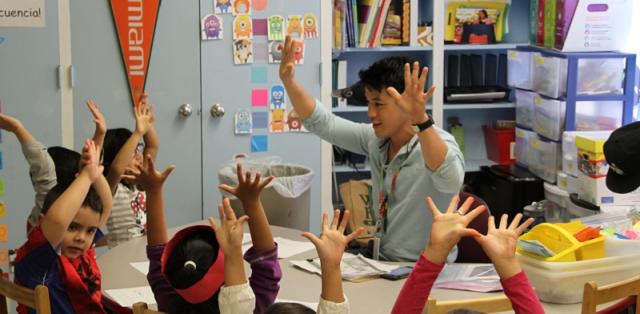FAQs
What is the Texas Resource Review?
Texas Resource Review (TRR) provides detailed, comprehensive quality reviews of instructional materials, so school districts can easily compare options. Our goal is for all students in Texas to have access to rigorous, high-quality materials. Local schools across Texas are eager to purchase the best materials, but the selection process is time consuming. Tens of thousands of teachers spend precious instructional days reviewing materials of wide-ranging quality. Free information is often disorganized or difficult to access.
What does it mean to evaluate the quality of instructional materials?
TEA contracts with a private entity to conduct an independent analysis of each instructional material to evaluate its quality. As a part of this process, the agency ensures that the definition of quality is communicated via rubrics that are used to assess all instructional materials.
What is the process for developing the rubric?
The goal of the TRR rubrics is to provide LEAs with helpful information about the quality of instructional materials. The rubrics are customized based on content area and grade band with some commonalities across all rubrics. For more information, see the rubric development page.
Who develops and provides feedback on the quality rubrics?
TEA receives feedback from hundreds of stakeholders including but not limited to Texas teachers, district and campus administrators, SBOE members, regional education service centers, numerous Texas associations, and publishers. For more information, see the rubric development section of our website.
How does the Texas Resource Review work with the SBOE standards review process? Are they different?
The Texas Resource Review of instructional materials supports and enhances the established standards alignment review process. All materials reviewed for quality are also reviewed using the SBOE’s review process and the results of the standards review are featured as a part of the quality reviews on the TRR website.
How does TRR align with the State Board of Education's Long-Range Plan?
The State Board of Education adopted a Long-Range Plan for Public Education that establishes an overall goal of “access and equity so that all children receive what they need to learn, thrive, and grow.” To achieve this vision, one specific recommendation from the SBOE is that TEA “provide a greater array of no-cost or low-cost resources to support high-quality, aligned curriculum and instruction for all educators.”
How did the Texas Resource Review come about?
The TRR is required by statute in SB 810, 85(R) and companion legislation in HB 3526, 85(R). These bills require TEA to develop and maintain a web portal that includes a) general information such as price, technology requirements, etc. for each material on the state adoption list or submitted by a publisher, b) a quality evaluation of the material conducted by a private entity, and the extent to which materials cover the TEKS, and c) a repository of open educational resources accessible at no cost, including state-developed materials.
Who conducts the reviews?
All reviewers are Texas educators. Each review team consists of five reviewers. At least two review team members are current classroom teachers.
What are the financial benefits to Texas?
The Texas Resource Review, including all published quality reviews, is available at no cost to districts across Texas. Feedback from some districts indicates that increased access to free, user-friendly information is helping to improve their local review and adoption processes which for some may result in cost savings.
Research indicates that implementing high quality instructional materials is more cost-effective than some other common interventions.
Are there incentives or consequences related to use of the TRR?
No. Using the reviews is completely optional. There are no incentives or penalties associated with using or not using the reviews.
When are reviews published?
Each review cycle spans about four to six months. Quality reviews are published at the conclusion of each cycle.
Are districts required to use the information in the quality reviews?
TEA believes deeply that local education agencies (LEAs) are best positioned to decide which curricula best fit the needs of their teachers and students. The TRR website is designed to complement and strengthen each LEA’s local review process by providing clear information about the quality of curricula. The TRR does not impact a district's ability to make their own local review and adoption decisions and LEAs have complete autonomy to decide if and how they use the quality reviews as part of their local decision-making processes.
My district already uses certain programs or subscriptions. Does TRR replace that?
LEAs should use the resources that best meet their local needs. The goal of the Texas Resource Review is to ensure that all LEAs across Texas have access to valid and reliable information about the quality of instructional materials, not to supplant other resources that LEAs find helpful.
Which other grades and content areas will be reviewed in the future?
The Texas Resource Review is intended to be a continuous process where teams of Texas educators conduct quality reviews of materials that meet the needs of districts.
The selection of subject areas and grade levels to be reviewed is informed by expressed needs and purchasing patterns of local education agencies. TEA seeks to align the timing of quality reviews with the adoption and purchasing timelines followed by most districts based on the proclamation schedule.
How is TRR different from other states that have similar initiatives?
The Texas Resource Review is designed specifically for Texas. All rubrics are based on Texas state standards (TEKS and Texas Prekindergarten Guidelines) and created by and for Texas educators. Quality reviews are completed by teams consisting exclusively of Texas educators.
What resources are being devoted to this project?
Each district and open-enrollment charter school is entitled to a technology and instructional materials allotment (TIMA). The amount of the TIMA is determined biennially by the Commissioner of Education and is based on legislative appropriation.
